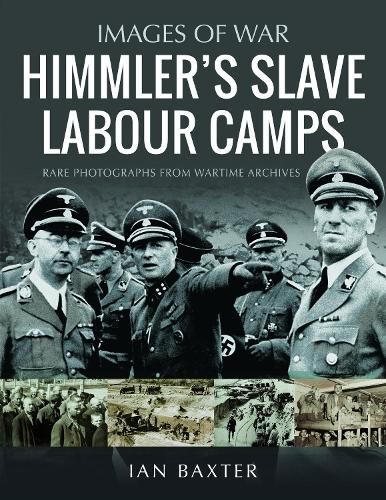Readings Newsletter
Become a Readings Member to make your shopping experience even easier.
Sign in or sign up for free!
You’re not far away from qualifying for FREE standard shipping within Australia
You’ve qualified for FREE standard shipping within Australia
The cart is loading…






Shortly after their rise to power, the Nazis established specific Arbeitslager (labour camps) which housed Ostarbeiter (eastern workers), Fremdarbeiter (foreign workers) and other forced labourers who were rounded up and brought in from the east. These were distinct from the SS-run concentration camps. The use of forced labour grew significantly in 1937 due to rearmament requirements and again after the outbreak of war The invasion of the Soviet Union in June 1941 further heightened demands for labour and the availability of new workers in areas under Nazi occupation. Vast numbers were deported to forced labour camps, where they worked either producing war materials or on construction projects. As in the Nazis' view, inmates were slaves pure and simple and replaceable with others, there was a complete disregard for the health of prisoners. Required to work long hours with little or no time for rest or breaks they were subject to insufficiencies of food, equipment, medicine and clothing. As a result of these conditions and brutal treatment, death rates were shockingly high. By 1945, more than fourteen million people had been exploited in the network of hundreds of forced labour camps that stretched across Nazi-occupied Europe. In true Images of War series style, this superbly illustrated book graphically describes the growth of the slave camp system and the conditions inflicted on the luckless labour force. AUTHOR: Ian Baxter is an avid collector of WW2 photographs. His previous books in this Series include Hitler's Boy Soldiers, Nazi Concentration Camp Commandants and German Army on the Eastern Front ? The Advance, German Army on the Eastern Front ? The Retreat and Nazi Concentration Camp Commandants, The Crushing of Army Group (North) and the SS Waffen Division series including SS Leibstandarte Division and SS Totenkopf Division At War. He lives near Chelmsford, Essex. 200 b/w illustrations
$9.00 standard shipping within Australia
FREE standard shipping within Australia for orders over $100.00
Express & International shipping calculated at checkout
Shortly after their rise to power, the Nazis established specific Arbeitslager (labour camps) which housed Ostarbeiter (eastern workers), Fremdarbeiter (foreign workers) and other forced labourers who were rounded up and brought in from the east. These were distinct from the SS-run concentration camps. The use of forced labour grew significantly in 1937 due to rearmament requirements and again after the outbreak of war The invasion of the Soviet Union in June 1941 further heightened demands for labour and the availability of new workers in areas under Nazi occupation. Vast numbers were deported to forced labour camps, where they worked either producing war materials or on construction projects. As in the Nazis' view, inmates were slaves pure and simple and replaceable with others, there was a complete disregard for the health of prisoners. Required to work long hours with little or no time for rest or breaks they were subject to insufficiencies of food, equipment, medicine and clothing. As a result of these conditions and brutal treatment, death rates were shockingly high. By 1945, more than fourteen million people had been exploited in the network of hundreds of forced labour camps that stretched across Nazi-occupied Europe. In true Images of War series style, this superbly illustrated book graphically describes the growth of the slave camp system and the conditions inflicted on the luckless labour force. AUTHOR: Ian Baxter is an avid collector of WW2 photographs. His previous books in this Series include Hitler's Boy Soldiers, Nazi Concentration Camp Commandants and German Army on the Eastern Front ? The Advance, German Army on the Eastern Front ? The Retreat and Nazi Concentration Camp Commandants, The Crushing of Army Group (North) and the SS Waffen Division series including SS Leibstandarte Division and SS Totenkopf Division At War. He lives near Chelmsford, Essex. 200 b/w illustrations